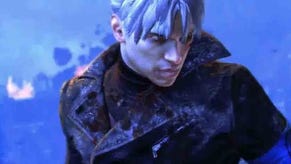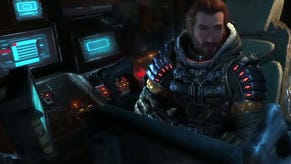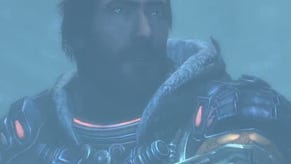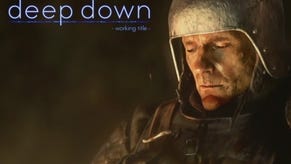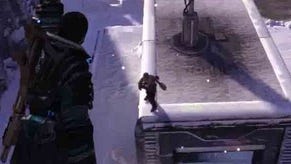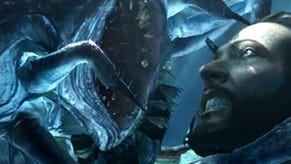Lost Planet 3 review
Spork unlimited.
Lost Planet 3 is a tremendously boring game masquerading as a slightly interesting one. A backwards-looking game in many ways, Spark Unlimited's prequel returns to both the icy wastes and single-player focus of the first game in Capcom's weirdly resilient series, which has made it to a second follow-up despite never troubling the sales charts or particularly wowing reviewers.
You return to the iced-over planet of E.D.N. III in the clunking workman's boots of Jim Peyton, a salt-of-the-earth everyman type who, naturally, is just doing this for his family. "This", in the case of Lost Planet 3, means stomping about in his 30-foot mech like a gigantic, robotic odd-job man: mending frozen machinery, planting siphons in order to harvest the series' plot-driving T-Energy, and engaging in an awful lot of pest control. The pests in this case are Akrid, the bestial cannon fodder whose bodies run on Lost Planet's plot-juice and who clearly don't think much of Earth's industrial expansion to and exploitation of their home world.
It's while Lost Planet 3 establishes all this that the game reaches its delirious high point of slight interest. Peyton's I'm-just-an-ordinary-guy-me shtick might be a touch laboured, but it's more or less convincing. He is pleasant if bland company: one of the more likeable straight, white, young, male and power-armoured protagonists in a genre stuffed full of them, his motivations bringing a touch of human warmth to E.D.N.'s chilly environment.
The game explores these motivations via stilted yet touching one-sided video messages between Jim and his wife, who at one point sends him a playlist of country tunes you can set a-twanging as you strut about in Jim's Rig. No-one has yet made a game about the lonely tedium of, say, working on an oil platform while your family wait for your return, but beneath the sci-fi wrapping, that's the theme that Lost Planet 3 seems to be exploring.
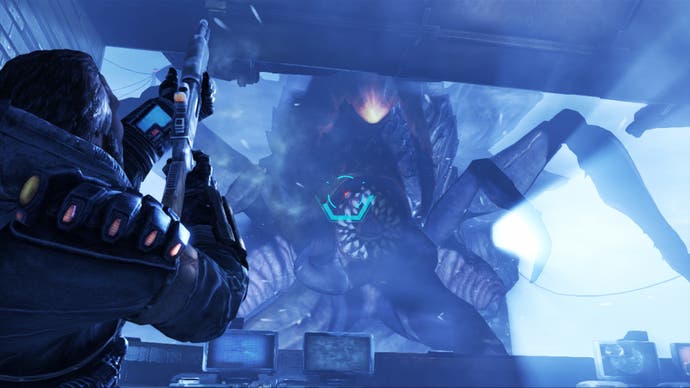
There's a weird, atmospheric mundanity to these early chapters, during which Lost Planet 3 pretends to be about being a mechanic in outer space. Sure, clearing out those first few Akrid nests is kind of dull, as is returning to the exact same spots later to battle the same enemies in order to harvest the T-Energy. But hey, it's work, right? And fresh messages from home regularly remind you why you're doing it.
The science-fiction helps sell that stark, wearying, edge-of-the-world feeling too. Jim's home-made Rig isn't some souped-up battlesuit (indeed, the fact that the workers can't duct-tape rocket launchers to their mechs due to bureaucratic barriers is a hand-waving plot point); it's a big, clunky tool, a tool that ices over when E.D.N. III's cruel storms storms hit and which you must laboriously shoot the crystalline formations off before you can hop back inside. Even battling the Akrid manages to feel oddly like a day-to-day chore. The alternately insectoid and mammalian-looking aliens aren't some evil empire, after all - they're just pesky local fauna.
The mechs might be the closest thing this series has to an iconic feature, but the role of Jim's rig has been downplayed considerably in favour of on-foot combat. That's a misstep, because the game conveys the hulking weight of the metallic Goliath surprisingly well in its stomping gait, and the deliberately limited viewing angle from within the cockpit adds a dash of simulation to otherwise resolutely arcadey controls and combat.
On foot, things turn out to be far more characterless. Jim sticks to cover competently but slightly awkwardly, dodges enemies with a roll that could only be described in the same terms, and wields a generic arsenal matched only for lack of imagination by the Akrid themselves, who manage to combine the faceless-horde tedium of fighting Halo's Flood with some utterly unashamed hit-the-glowing-weak-point monster design.
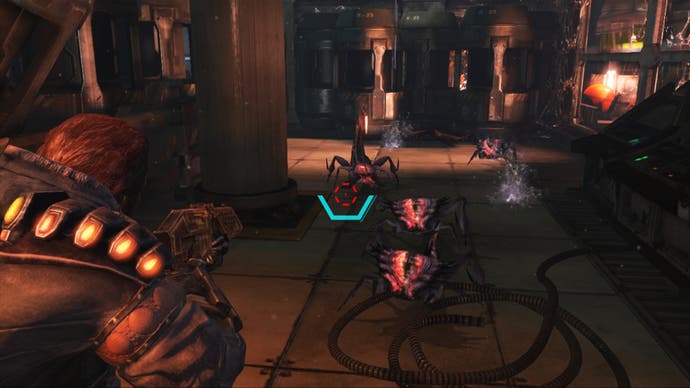
There's a dash of Metroidvania to the structure, thanks to items like ziplines and winches that let you access parts of levels inaccessible during early visits. But these aren't fun, interesting tools; they're keys designed to unlock areas of E.D.N. III when the designers decide you're ready for them, and they've been worked into the game with no finesse. Jim's grappling hook doesn't tug at him with any sense of weight or force, it just sort of slides his character model upwards towards the surface to which it's attached.
So, Lost Planet 3 is dull. But while the early chapters at least manage to be dull in a thematically relevant way, this isn't true for the latter half of the game. Spark Unlimited abandons the lonesome atmosphere and working-man themes the moment the real plot kicks in, lurching suddenly and inevitably towards generic sci-fi conspiracy and unlikely heroism.
Fittingly, the point at which the game shifts gears is marked by one the longest continuous on-foot sections thus far, a tedious slog through one of those abandoned, corpse-strewn research facilities - you know the type - that's lit and structured like a forgotten deck of Dead Space's Ishimura, but which can't translate the survival horror atmosphere into survival horror mechanics. This game is built for shooting, and recharging health coupled with bountiful ammo simply doesn't make for a tense or scary game to play.
It's around here that the perilously thin layer of frost melts away and Lost Planet 3's deepest flaws are exposed. Level design is a problem in the exterior scenes: the game's world is so cramped and divided by loading screens I genuinely couldn't tell you which bits are the hubs and which are the spokes, and that hurts your sense of stomping freedom in the rig. But the interiors are just lazily strung together shooting galleries which pinball Peyton between objective markers on flimsy narrative pretexts.
The sense throughout is of a much shorter game being padded to the point of suffocation
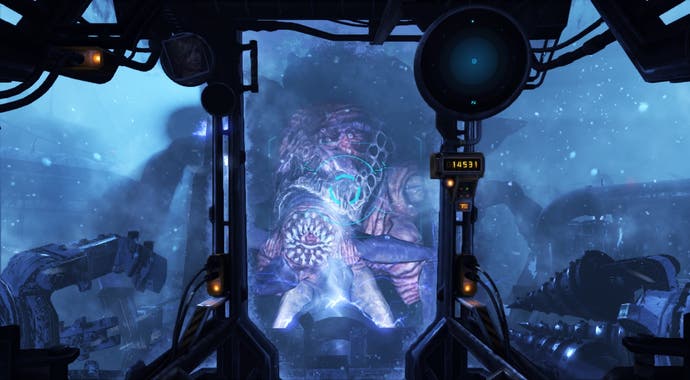
There isn't a generator on E.D.N. III that doesn't need to be repaired, a locked door that doesn't need a trip to the security system's manual override, or a megabyte of data that isn't corrupted yet thankfully backed up on the other side of the base. The sense throughout is of a much shorter game being padded to the point of suffocation - leading to wearying trials like manually overriding a locked-down cargo elavator carrying your rig for each of the five floors it must ascend, or fighting the same bullet-sponge boss three times in 15 minutes.
This is also where the game starts to feel less finished. Most of this is cosmetic stuff, like terrible lip-syncing during cut-scenes or buggy character behaviour heading into them, but some is more serious. My battle against a giant Akrid who just wouldn't die was an infuriating 20 minutes followed by a reload in which his glowing weak point suddenly seemed considerably weaker, while my favourite weapon in the game - an explosive crossbow named the Valkyrie - comes with a considerable caveat: sometimes the splash damage from an impact would hurt me from across the room for absolutely no reason I could ascertain.
It's worrying when the nicest thing you can say about a game is that the early sections manage to be boring in an interesting way, but it's true for Lost Planet 3. It's a game that manages to make third-person shooting feel like work - and one that makes work feel like something that more games should explore.


